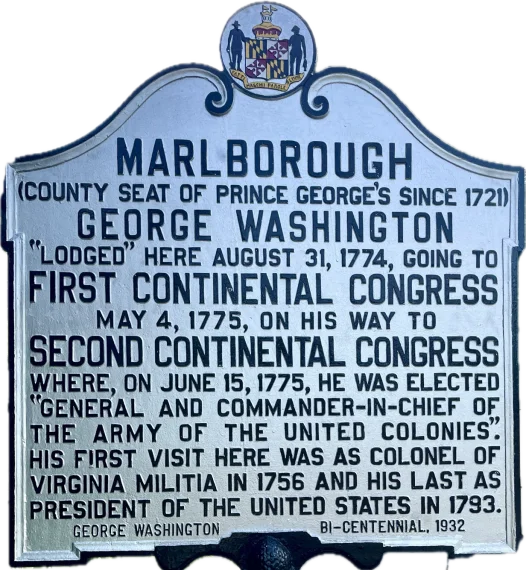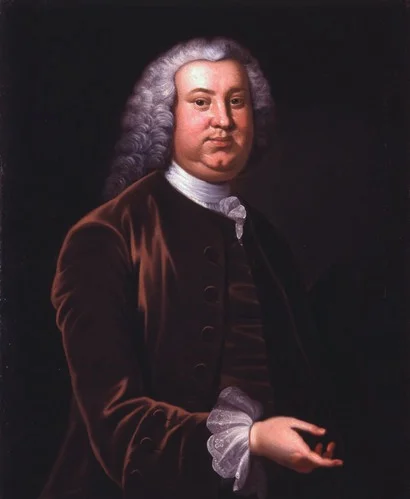Follow George Washington’s journey to the Second Continental Congress.
On May 4, 1775, George Washington climbed into his chariot and departed Mount Vernon, bound for Philadelphia. He was on his way to attend the Second Continental Congress, convening just a month after the Revolution’s first shots were fired at Lexington and Concord in Massachusetts. Washington was a respected Virginia planter, former military commander, and member of the House of Burgesses—but he was not yet the commanding leader of a rebellion.
Washington had no way of knowing, on that warm spring morning, that he would not see his beloved Mount Vernon again for more than six years.
What followed was a five-day journey through the colonial countryside—across rivers, over rough roads, and through patriot towns bristling with anticipation. Drawing from Washington’s own diary and period sources, this timeline traces his travels day by day—capturing both the literal and symbolic movement from private citizen to revolutionary commander.
May 4: A Farewell to Mount Vernon
Washington leaves Mount Vernon likely in the company of fellow burgess Richard Henry Lee, who had arrived the day before. Riding in his chariot, he travels north to Alexandria.
Washington’s diary notes that he “Dind in Alexa.,” but as there are no meal-related expenses recorded in his ledger, it is likely that he is hosted by a friend or political ally. From there, he pays 7 shillings and 6 pence to take a ferry across the Potomac River and lodges that evening in Marlborough, Maryland (now Upper Marlboro).
This first leg covers about 30 miles, but it marks a monumental turning point. Washington is leaving behind his estate, his family, and the rhythms of planter life for what will become a central role in the fight for American independence.
May 5: Roads, Gates, and Militia
Though Washington has traveled to Baltimore before, he is still unfamiliar with the path and decides to hire a guide to assist him. The journey is slow—the roads in this part of Maryland run through farms, and much time is lost in stopping to open and close gates each time the road passes from one field to another. Two years later, in 1777, one traveler will grumble about passing through 32 gates in one day on this route.
Washington likely meets several other delegates on the road between Mount Vernon and Baltimore because Peyton Randolph, Edmund Pendleton, Benjamin Harrison, and Joseph Hewes and Richard Caswell of North Carolina all arrive in the city on this day.
As the delegates approach Baltimore, they are met by three companies of local militia and escorted into town. They lodge at the Fountain Inn, a popular stop for travelers. Two years earlier, it was described as a “large and commodious house.”
May 6: Public Honors in Baltimore
The winds in Baltimore blow from the east as Washington reviews four local militia companies drawn up on the town common—a gesture of admiration and solidarity. In the afternoon, he and the other delegates attend a banquet hosted by the townspeople of Baltimore at the courthouse.
This day marks a shift: Washington is no longer just a delegate—he is becoming a symbol of resistance, a figure of admiration among patriots.
May 7: The Best Taverns on the Road
Under cool and pleasant skies, Washington departs Baltimore. He notes that he “Breakfasted at Cheyns’s,” likely a tavern located about 13 miles east of the city.
In total, Washington travels roughly 40 miles through Maryland countryside before dining at Rogers’s Tavern and lodging at Stephenson’s Tavern near the crossing of the Susquehanna River. Rodgers, a Scottish immigrant and recent tavern-keeper, is an emerging patriot figure—already active in local revolutionary committees and destined to become a colonel in the Maryland militia.
William Stephenson, another Scottish émigré, runs one of the best-regarded public houses on the mid-Atlantic travel route, directly across from Rodgers’s establishment. Two years later, in 1777, one traveler will describe Stephenson’s and Rodgers’s as the two best public houses between Philadelphia and North Carolina.
Washington ends his day surrounded by the stirring activity of two taverns that will soon serve as informal hubs of revolutionary communication and hospitality.
May 8: Crossing into Delaware
After breakfasting in the port town of Charlestown, Maryland, Washington crosses into Wilmington, Delaware, where he dines and lodges for the night.
His financial records for the day show he visits the barber and pays for the bleeding of his horses, a common veterinary practice of the 18th century in which blood was drawn from a horse to treat or prevent illnesses. It’s plausible that the barber Washington visited either performed the bleeding himself or arranged for it.
May 9: Arrival in Philadelphia
Five days after departing Mount Vernon, Washington arrives in Philadelphia for the Second Continental Congress. He dines at the City Tavern and lodges at the home of Joseph Reed, a Philadelphia lawyer and future aide-de-camp to Washington.
Samuel Curwen, a Loyalist, also spends the evening at Reed’s house “in company with Colonel Washington a fine figure, and of a most easy and agreeable address … I staid till 12 o’clock, the conversation being chiefly on the most feasible and prudent method of stopping up the Channel of Delaware to prevent the coming up of any large King’s ships to the City.”
Within weeks, Washington will be named Commander-in-Chief of the Continental Army. The journey is complete—but the war is only beginning.
Six Years Away
Washington would not return to Mount Vernon until 1781, while marching his troops from New York to Virginia in preparation for the Yorktown campaign.
During those six years, he led a fledgling army through victory and defeat, hardship and hope. His journey to Philadelphia in May 1775 began on quiet roads—but ended with the birth of a nation.




